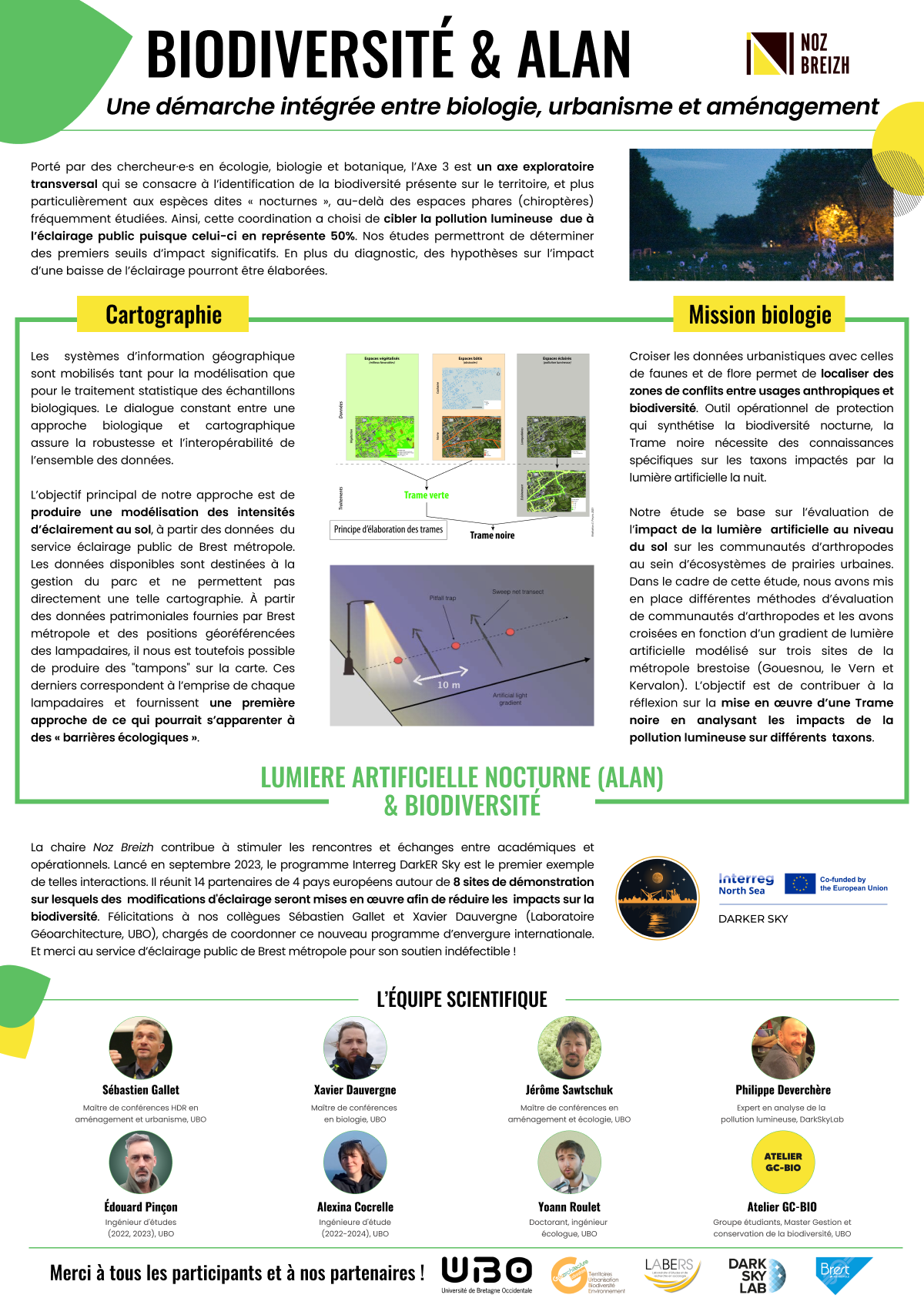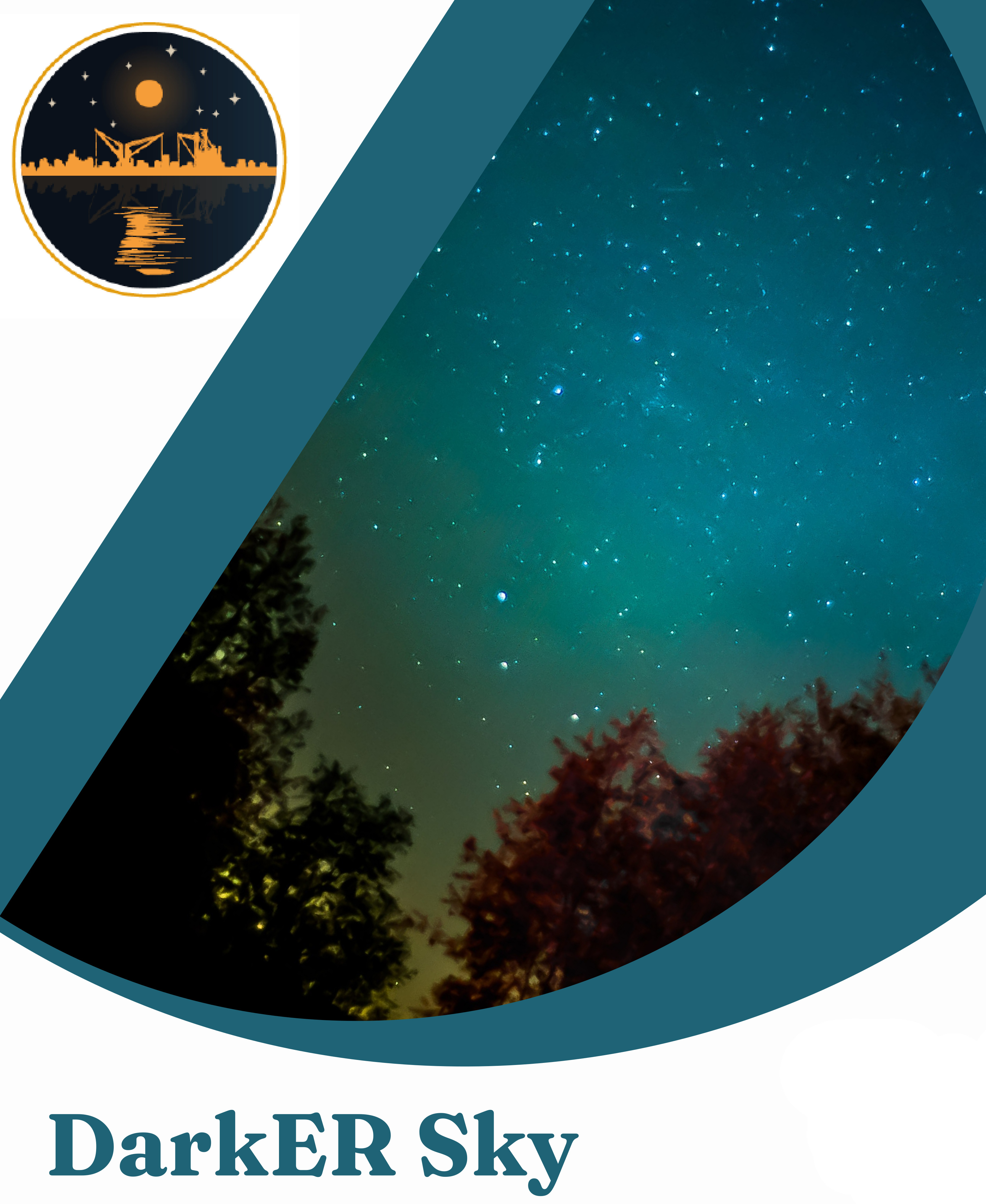Artificial Light at Night (ALAN) and Biodiversity
Led by researchers in ecology, biology and botany, Axis 3 is dedicated to identifying the biodiversity present in the area, and more specifically to so-called "nocturnal" species, beyond the flagship species (chiropterans) that are frequently studied.
The specificity of this exploratory axis its transversality: It aims to establish an integrated approach between biology, urban planning and local development.
This coordination has therefore chosen to target light pollution from public lighting, since it reportedly accounts for 50% of total light pollution. Our studies will enable us to determine the first significant impact thresholds. In addition to the diagnosis, hypotheses on the impact of a reduction in lighting can be developed.

Citation : Chaire Noz Breizh (2024), Biodiversité & ALAN, une démarche intégrée entre biologie, urbanisme et aménagement, présenté lors du colloque Smart Noz, Brest, 18-20 mars 2024
Introducing our research projects
BIODIVERSITY
A synthesis of nocturnal biodiversity, the "Trame Noire" (dark ecological network) requires specific knowledge of the taxa impacted by artificial light at night on the one hand, and provides an operational tool for protection on the other.
GIS & DARK ECOLOGICAL NETWORK
Geographic Information Systems are used both for modeling and statistically processing biological samples. The constant dialogue between a biological and cartographic approach ensures the robustness and interoperability of all data.
SOCIOLOGY & BIODIVERSITY
Building on the work carried out under Axis 1, the project aims to establish a common sociological survey protocol around biodiversity and social dynamics at night, while adapting to the specific features of the DarkER Sky Interreg project in 2024-2025.
DarkER Sky launches!
The Noz Breizh chair helps to stimulate meetings and exchanges between academics and operational staff. An offshoot of the ALAN project launched in September 2023, the Interreg DarkER Sky program is the first example of such interaction.
It brings together 14 partners from 4 countries around 8 demonstration sites, where lighting modifications will be implemented to reduce the impact on biodiversity.
We would like to congratulate our colleagues Sébastien Gallet and Xavier Dauvergne (Laboratoire Géoarchitecture, UBO), who are in charge of coordinating this new international program, without forgetting to thank the unfailing support of Brest métropole's public lighting department, headed by Saïg Potard.
Well done to the whole team!
